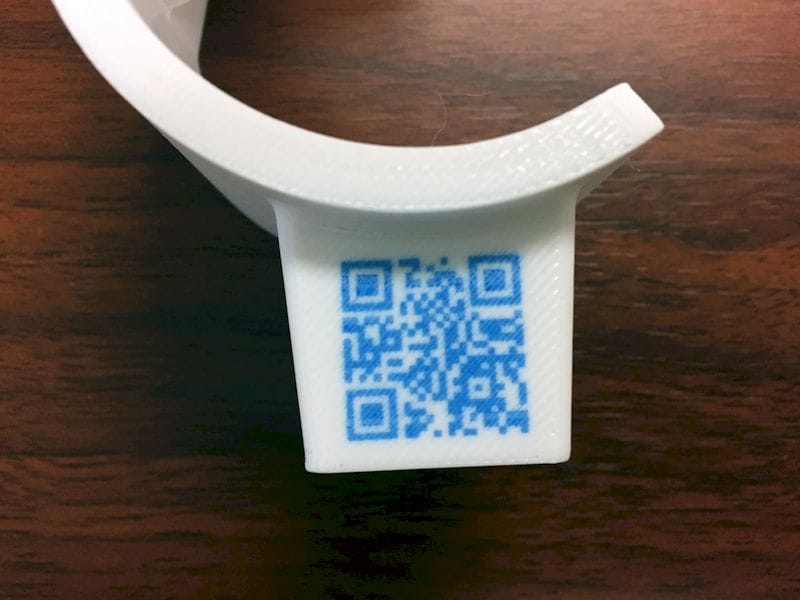
Rize announced something they call “Digitally Augmented Additive Manufacturing Parts” and while very promising, faces a steep path to adoption.
Rize is one of the very few companies marketing 3D printers capable of voxel-level control. This means they are able to change the properties of individual segments of the 3D print at a precise and very small resolution. This is very different than most other 3D print processes, in which slabs of mono material are squirted out in rapid fashion.
The potential of voxel-level control of 3D prints is an area that simply has not been sufficiently explored to identify new approaches. That’s likely because of the very few voxel-level control printers being available. But that will change, and one step in this direction seems to have been taken by Rize who announced a method of tagging 3D printed parts.
Essentially they are implanting a signature on or within a part by appropriate manipulations of the voxels to form the desired symbols. It’s like slapping a label on a part, except in this case it’s literally integrated with the part.
Why do this? There are many reasons, but let’s see what Rize says:
A significant challenge in the additive manufacturing industry are parts that are non-compliant due to design changes, piracy, counterfeit and obsolescence, that adversely impact the user and customer experience and result in rework, recalls and loss of brand value.
The idea here is to implant a symbol to provide identification of the part to overcome these challenges.
But wait, what if there’s a forgery? Could not other parties simply place the same symbol on their counterfeit part? I suppose that might be possible if they happened to own the same 3D print technology from Rize.
And this is where I have some thoughts about this approach. While Rize’s ability to plant tags is obviously a very good idea, the usefulness of the tags rests on a number of other parties to make good use of it.
If a part is tagged, then the consuming parties must be able to “read” the tag. They would then check the tag against some authoritative source to ensure it’s a “real” part. Rize suggests using a QR code or similar system for this, which is quite reasonable. However QR codes are easily duplicated, so a proper result would require some other digital system to manage the codes in a way that would render them unique and unduplicatable.
This could be done with a centralized server that holds the registration of codes, but I suspect the industry would more likely adopt a blockchain approach, in which the codes would be guaranteed to be unique and immutable. The blockchain could be also used to store any other relevant information about the part, including its origin, properties, entire pedigree and even notes on its usage.
I don’t believe Rize is deploying such a standard, at least at this point, as it would more than likely require a significant industry consortium to back it.
There may indeed be work towards that standard in the future, but probably at this time we will first see individual companies implement systems of this sort, now enabled by Rize.
In the distant future we may see almost every part carry this information in a blockchain. For now, Rize seems to have taken the first big step in that direction.
Via Rize

